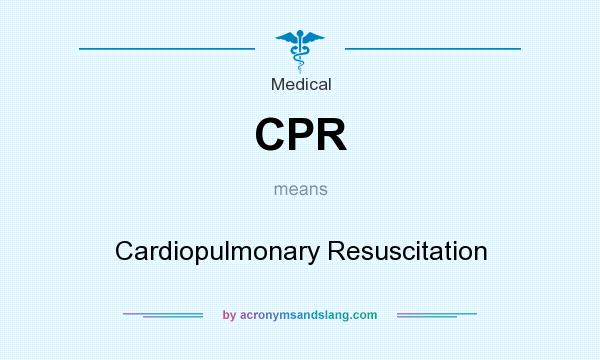

Whether you choose 100% in-person or blended learning CPR classes, our world-class instructors deliver the most up-to-date information that's engaging and effective, preparing you for the moments that matter.

Red Cross CPR training classes give you the information and the skills you need to help adults, children and infants during cardiac emergencies.
#Cpr stands for how to#
Learning how to perform CPR properly takes just a few short hours, but it can change a life forever.
#Cpr stands for full#
Full CPR is ideal for all ages, and especially for people who are more likely to experience respiratory emergencies such as children and infants. Getting trained in full CPR – combinations of chest compressions and rescue breaths – will increase your confidence and may enable you to help in other types of emergencies.

Hands-Only CPR: Hands-only CPR is an easy-to-learn skill that could save a life.Having more bystanders trained in this simple skill can help save lives by putting more cardiac arrest victims within a few steps of lifesaving assistance.

Why is CPR Important?ĬPR should be used when you see someone who is unresponsive and is not breathing or only gasping. The Red Cross helps train you safely, effectively and confidently so you’re prepared for the moments that matter. CPR can double or triple the chance of survival when bystanders take action. It’s not just for healthcare workers and emergency responders. If there is a defibrillator (AED) available, use it and follow the instructions on the machine until medical help arrives.With a half-million cardiac arrests each year, CPR increases the likelihood of surviving cardiac arrest, when the heart stops beating or beats too ineffectively to circulate blood to the brain and other vital organs. Do 30 compressions for every two breaths.įor a baby (0-12 months) place two fingers of one hand in the center of the chest.įor a child (one to eight years) p lace the heel of one hand in the center of the chest. If your child is still not breathing, star t CPR. Listen and feel for air coming out of their mouth or nose. Look and feel for movement of the lower chest and upper abdomen (stomach). If you see anything in the mouth, use two fingers to sweep it out. Open your child’s airway by moving their head into a neutral position and lift the chin. If there is a phone available, call 111 on speaker phone while you start CPR. If you're on your own and a phone is not immediately available, do CPR for about one minute then call for help. If your child doesn’t respond to you, ask someone to call 111 immediately. R - Respons eĬheck to see if your child is responsive – do they respond when you call their name, or touch their shoulder? S - Send for help D - DangersĬ heck for dangers to you, your child, or bystanders and make the area safe. Remember 'DR'S ABCD' for the assessment of an unconscious baby or child. If you aren't sure, it is better to start CPR right away. Children and infants who are not breathing normally need CPR.


 0 kommentar(er)
0 kommentar(er)
